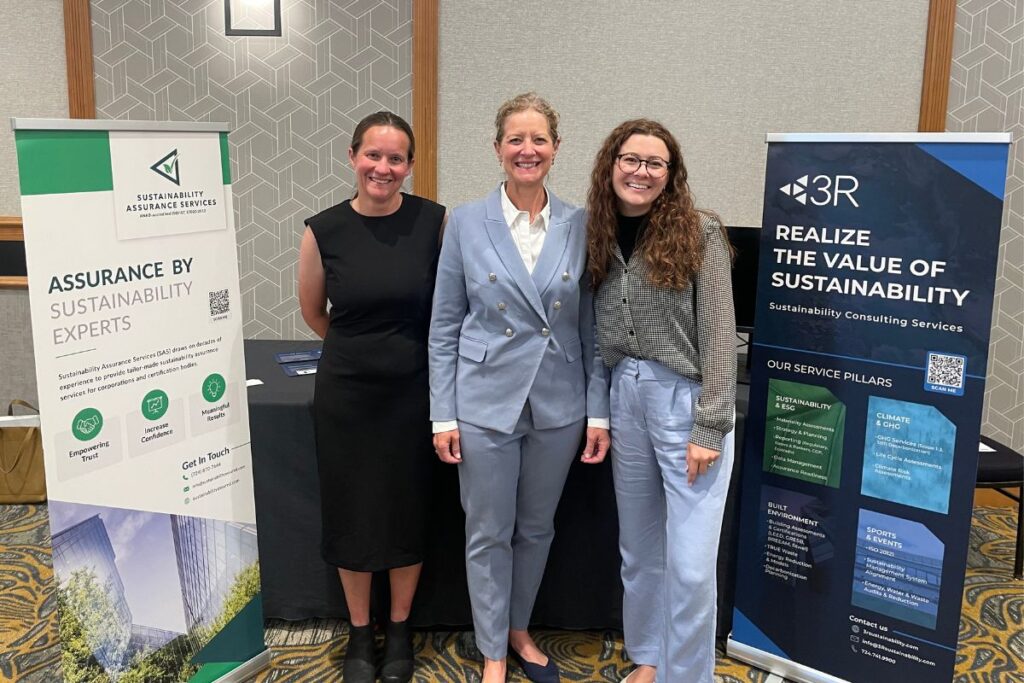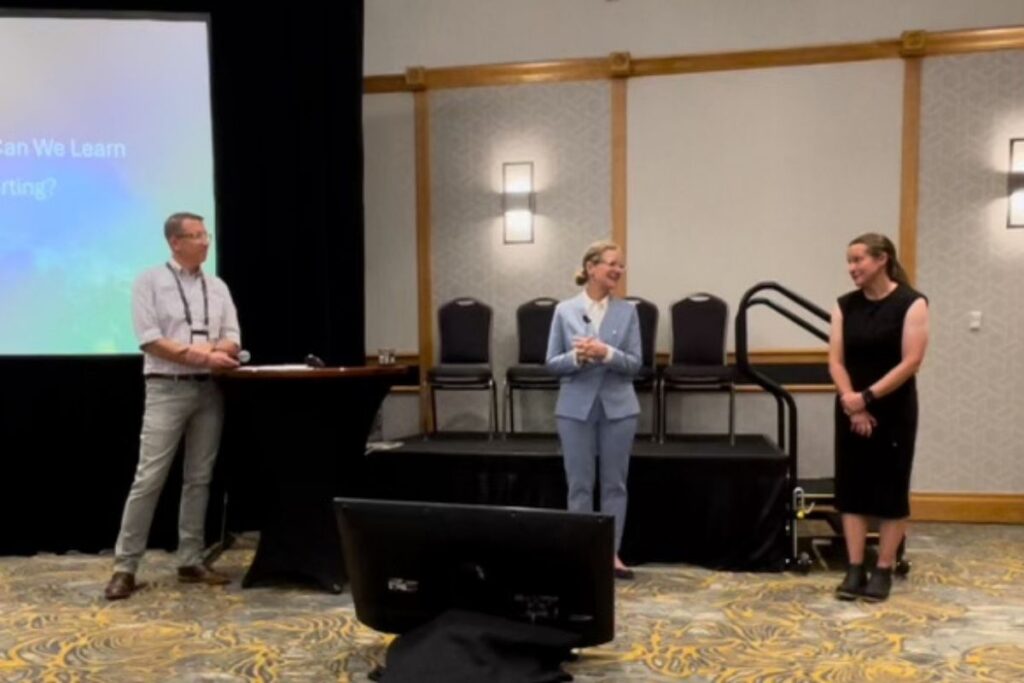
Gina MacIlwraith, Jana Lake, and Preston Buck
By Preston Buck, Sustainability and Business Development Associate
I had the opportunity to represent 3R alongside Jana Lake and Gina MacIlwraith at the ESG in Manufacturing Summit in Denver, CO, and connect with manufacturing employees involved in sustainability at their organizations. In addition to the opportunity to connect in real life with my typically remote colleagues, there is something special about meeting folks from around the country who have aligned interests and jobs. Even though we all operate in the same ESG world, it is always interesting to see what common struggles and unique differences exist within our organizations. Three main themes stood out to me during the summit:
1. Speak the same language as your stakeholders
As a sustainability consultant, I often hear the joke that half of our job is decoding what existing data can be used to comply with specific customer requests so that the client does not have to reinvent the wheel continuously. When attempting to gain buy-in internally, a key skill of the sustainability professional is interpreting requests and translating them in a way that internal stakeholders understand.
At this summit, which attracted a diverse group of manufacturing employees, there was a universal understanding of ISO language. When we translated the concept of a sustainability management system into the familiar ISO language of Plan-Do-Check-Act and risk-opportunity mapping, it resonated with the audience. This ISO approach is crucial for many existing management systems in manufacturing organizations, making it beneficial to discuss new sustainability concepts in a language that the audience is comfortable with.

Jana D. Lake and Gina MacIlwraith presenting at Summit
2. Implementing regulatory requirements and using assurance readiness to drive progress
At the summit, regulatory requirements like CBAM, CSRD, and CAL253+261 (involving ESG-related disclosures and 3rd party assurance) were a source of overwhelm throughout the audience. 3R has supported clients with regulatory reviews to help them determine when legal support is needed, what additional metrics may be necessary to track in order to comply, and even what emerging regulations might build upon existing regulatory requirements.
An assurance readiness assessment coupled with a regulatory review is a great way to pinpoint existing gaps in your current reporting or data collection process. Our consultants, who are well-versed in validation frameworks, can provide a readiness assessment that outlines a clear roadmap to compliance. Conference attendees were enthusiastic about using this approach to manage the multitude of requests they receive.
3. The importance of community
As someone who has attended (or planned!) many sustainability conferences, time and time again, I witness that the community-building aspects of events are revitalizing and, arguably, the most valuable. In many organizations, historically, sustainability professionals are siloed in their own corner or part of a team that is sustainability-adjacent-but-not-quite-sustainability-focused. All around me at the summit, I saw the benefit of being in a community of like-minded individuals—people who understand the alphabet soup of ESG and the challenges of progress, people who can think about your problem in a new way, or people who give kudos for good work that may not be recognized elsewhere.
I find spending time with the corporate sustainability community motivating, and it reminds me why I love doing the work that I do. To continue to use that comradery as fuel between conferences, I recommend joining a local sustainability professionals network, either on LinkedIn or through national groups like NetImpact or Green Drinks. After founding a sustainability professionals group in my hometown, I have had the opportunity to regularly connect with folks in the field and find myself recharged to work to advance our clients’ sustainability programs.